OpenAI seeks ‘vast quantities’ of nuclear fusion energy to power superhuman AI
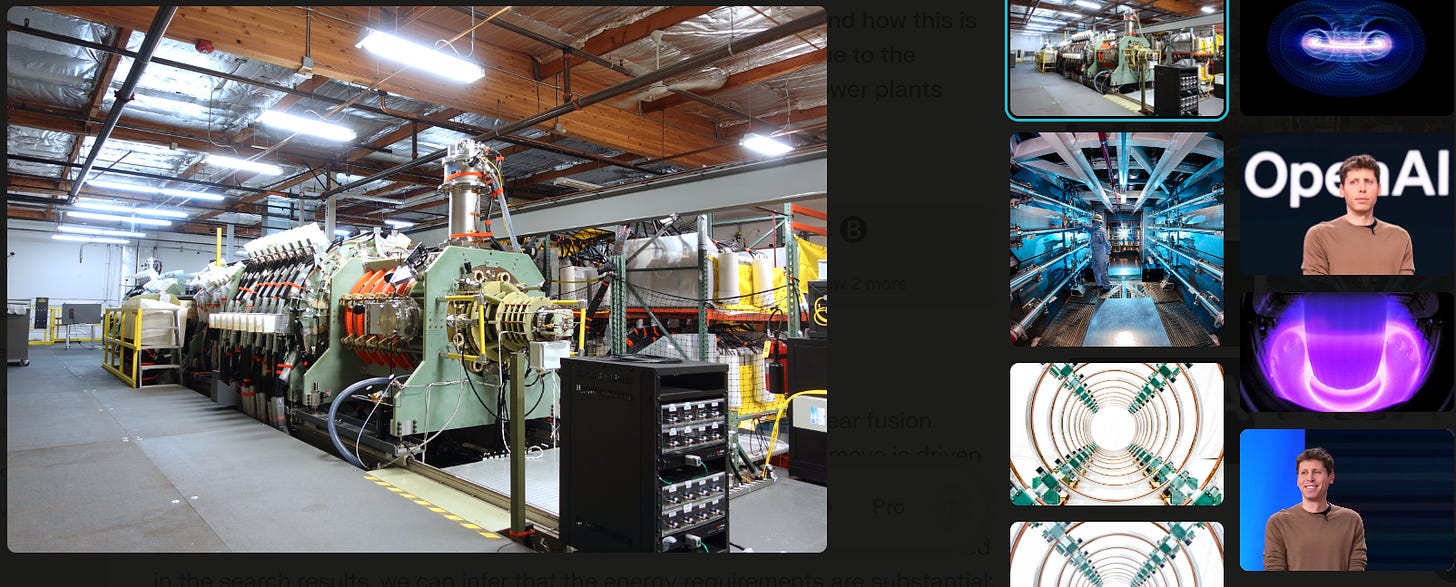
OpenAI's energy demands will be substantial. Not just OpenAI but this set off an AI arms race which will turn into an Energy Sourcing Stampede.
Grids are already stressed out in USA. (Remember Texas, California, Mid Atlantic, East Coast and other regions where heat waves or impact weather created hundreds of blackouts and this summers heat has caused of 7,500 power interruptions)

Data centers in their rush to be first movers are developing pop up power plants (solar) but AI data centers are going to source even more so lets discuss Nuclear Energy.
-
OpenAI is seeking to purchase "vast quantities" of electricity from nuclear fusion to power its data centers.
-
The International Energy Agency (IEA) forecasts that total data center electricity consumption could reach more than 1,000 terawatt-hours (TWh) by 2026, which is roughly equivalent to Japan's entire electricity consumption.
-
AI-related services are significantly increasing energy demands. For example, incorporating AI into search engines like Google could lead to a tenfold increase in electricity demand.
-
OpenAI's ChatGPT uses about 2.9 Wh of electricity per request, compared to 0.3 Wh for a typical Google search.
-
The AI industry's electricity demand is expected to grow exponentially, potentially increasing tenfold from 2023 to 2026.
-
Microsoft and OpenAI are reportedly working on a massive 5GW AI data center project called Stargate, which could cost up to $100 billion and come online in 2028.
-
In the US, data center electricity consumption is estimated to rise from about 200 TWh in 2022 to almost 260 TWh in 2026, accounting for 6% of total electricity demand.
-
OpenAI's data centers energy needs will be enormous, likely in the hundreds of terawatt-hours range annually.
-
The fact that OpenAI is seeking nuclear fusion energy, which is still in development, underscores the magnitude of their anticipated energy requirements for future AI systems
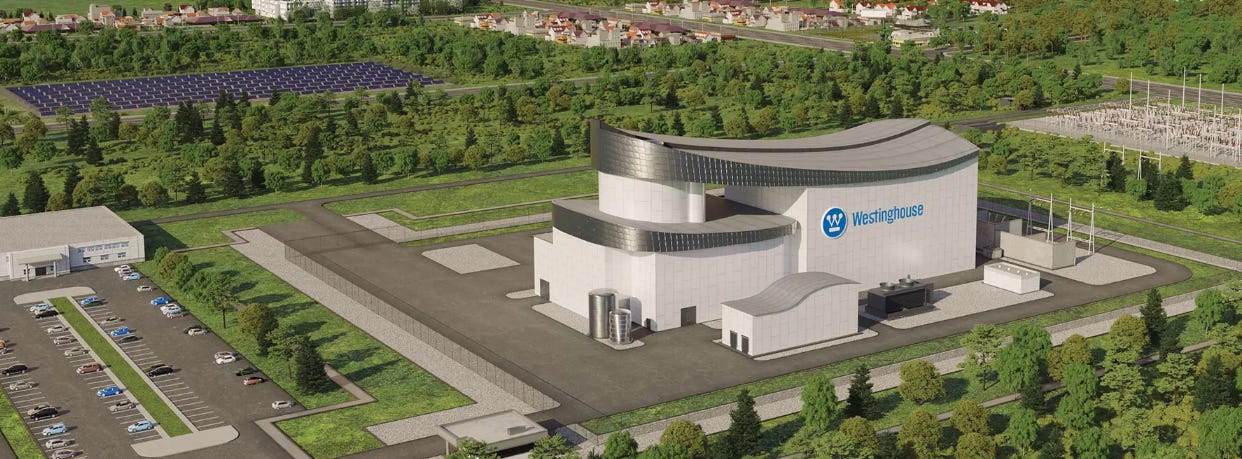
Forget Uranium: Silver is a Much Better Way to Profit from AI & Nuclear Energy
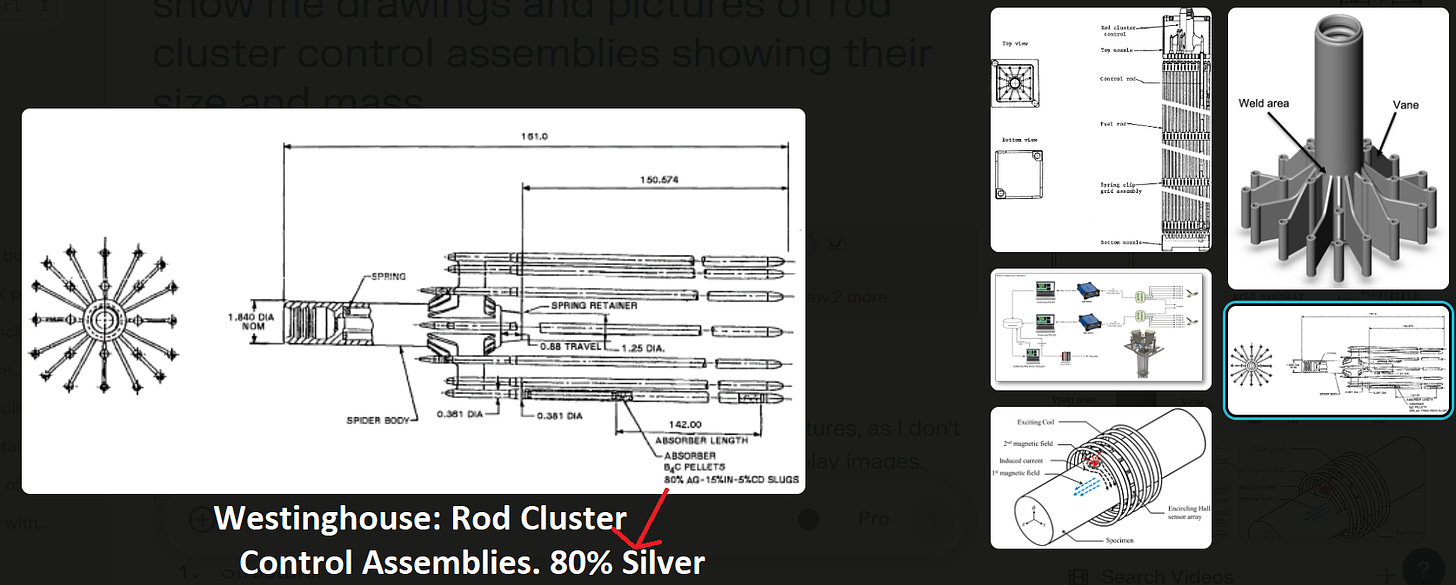
Rod Cluster Control Assemblies (RCCAs)
-
Structure:
-
RCCAs consist of absorber rods attached to a spider assembly.
-
A typical RCCA has 24 absorber rodlets.
-
The spider assembly includes a brazed spider, spider springs, a spring retainer, and a spring tension bolt.
-
Dimensions:
-
While exact dimensions aren't provided, we know that RCCAs are designed to fit within fuel assemblies in the reactor core.
-
For example, they're available in configurations for 14x14, 15x15, 16x16, 17x17, and 17x17XL core layouts.
-
Materials:
-
The absorber rods are made of a silver-indium-cadmium (Ag-In-Cd) alloy.
-
The rod cladding is made of high-purity, partially cold-worked Type 304 stainless steel tubing.
-
The outer surface of the cladding is coated with industrial hard-chrome plating for enhanced wear resistance
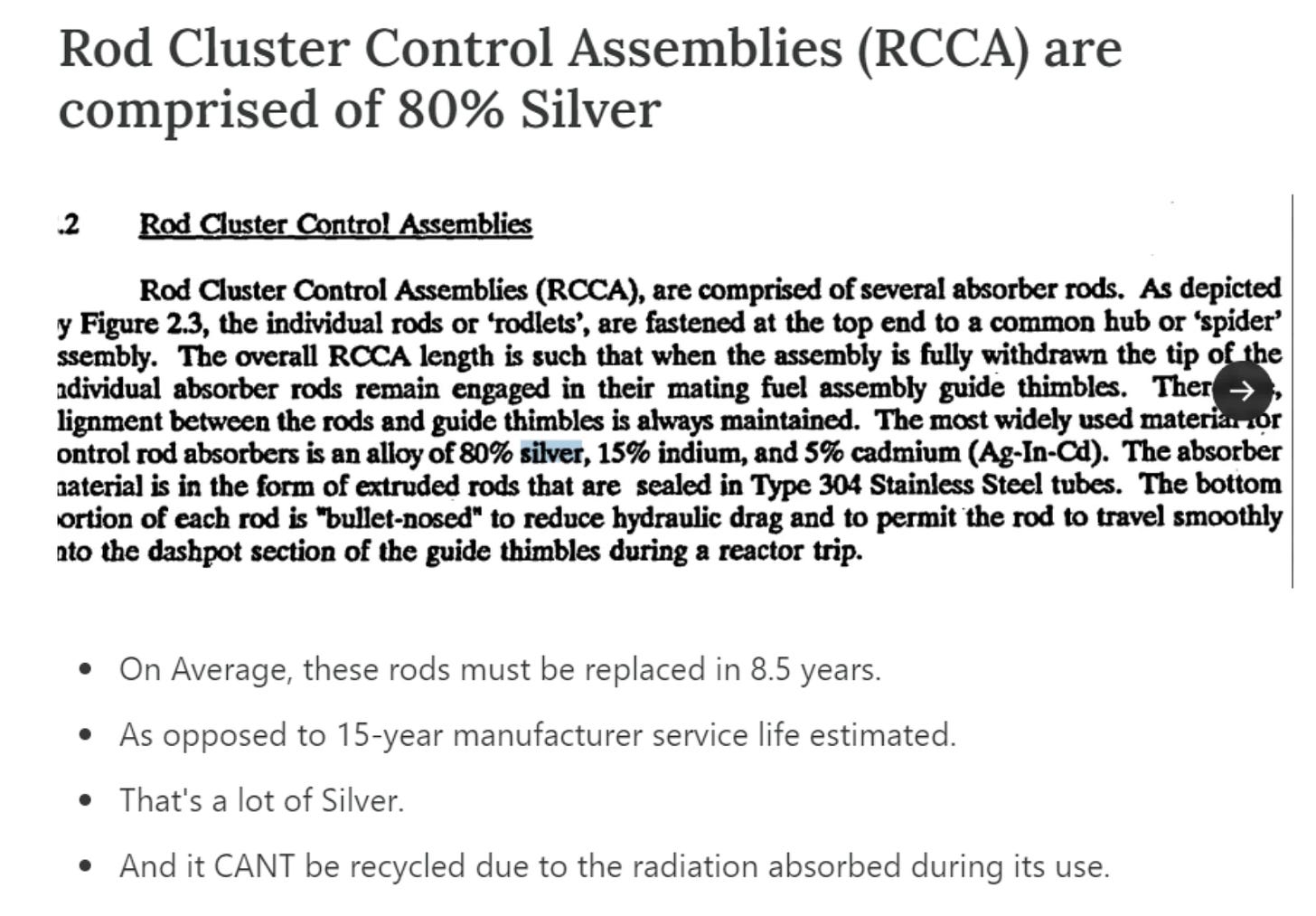
RECAP:
-
AI data centers will use more energy than any other industry sector in USA.
-
The two prevailing sources of AI Data Center Energy Needs are Solar and Nuclear.
-
Solar panels use 500,000 ounces of Silver per gigawatt
-
Considering a project like Microsoft / Open AI Stargate
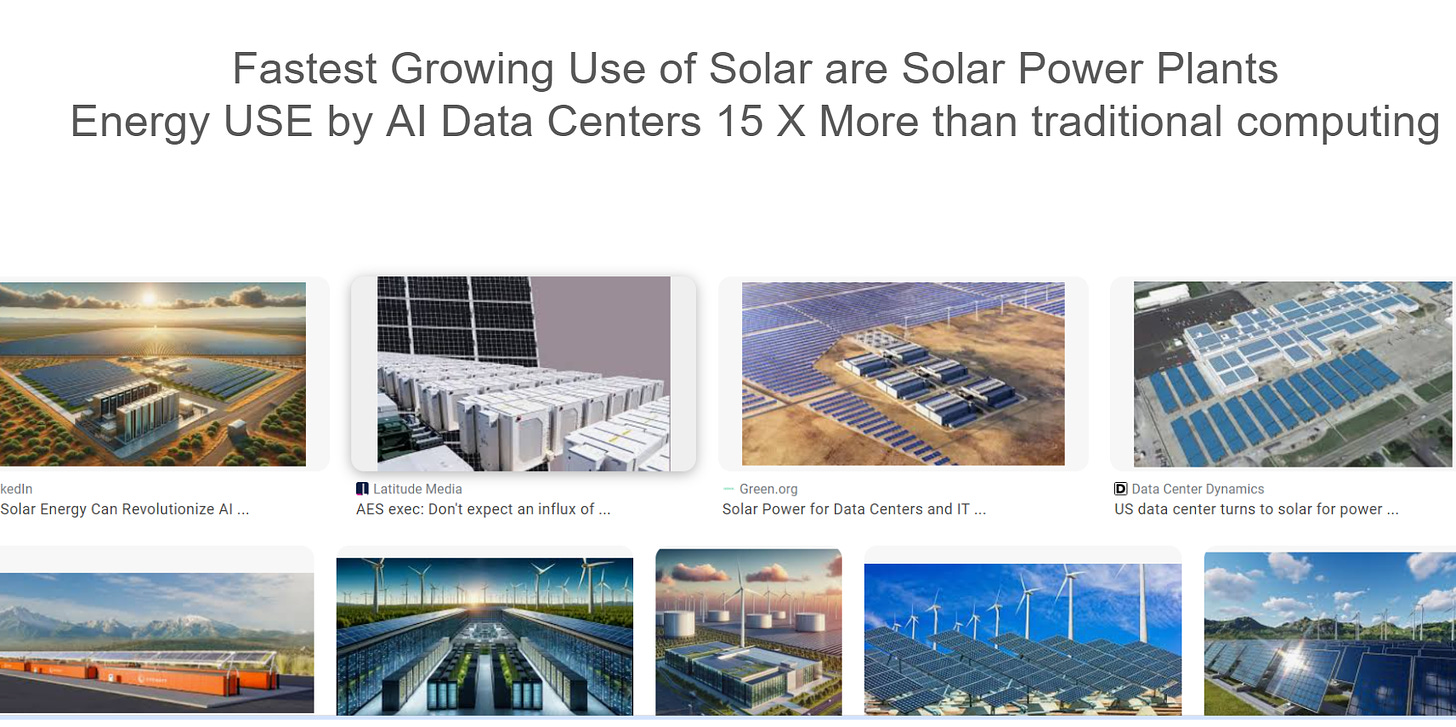

This table illustrates the silver usage for solar installations, comparing a standard 1 GW installation to the proposed Stargate AI data center project. The Stargate project, with its massive 5 GW capacity, would require five times the amount of silver used in a 1 GW installation, totaling 2,500,000 ounces of silver.
This significant silver requirement for large-scale solar projects like the Stargate AI data center underscores the growing demand for silver in the renewable energy sector. It also highlights the potential impact of AI and data center projects on silver consumption, as these facilities increasingly turn to solar power to meet their enormous energy needs
Silver: Best Way to Invest in AI and Silver could rival Uranium when considering Nuclear Energy based on the Rod Cluster Control Assemblies mentioned above
Uranium is relatively abundant in Earth's surface due to its lithophile nature, which causes it to concentrate in the continental crust during geological processes.
Additionally, uranium's long half-life allows it to persist in the crust over geological time scales. Unlike siderophilic elements that alloy with iron and sink to the core, uranium's chemical properties prevent it from doing so, contributing to its presence in the Earth's crust.
The Earth's crust contains about 2-4 parts per million of uranium, making it more common than silver.
In contrast, silver is rarer in Earth's surface, with an average crustal abundance of only 0.075 parts per million. There are only 33 deposits of Silver Globally with over 25 Million ounces and most of these are not of the highest grade compared to the 4 silver miners we endorse.
Silver is in high demand for various applications, including AI, aerospace, solar panels, electronics, robotics, jewelry, investment, and military uses.
This increased demand across multiple industries will lead to a massive spike in silver's value and importance in the global market, making it a critical resource and its significant to report Silver’s relative rarity compared to uranium.
Outcrop Silver TSXV: OCG | OTCQX: OCGSF | DE: MRG
Outcrop Silver is advancing the Santa Ana project, a high-grade silver deposit located near the town of Mariquita in Colombia's Tolima Department. The project covers over 27,697 hectares and is situated approximately 190 km from Bogota.
Santa Ana is notable for its exceptional silver grades, with indicated resources averaging over 600 g/t silver equivalent
The company has conducted extensive exploration, completing more than 330 diamond drill holes and discovering seven mineralized veins within a 3.7 km area of the historic Santa Ana mines vein system.
Outcrop Silver's focus on this primary silver project with world-class discovery potential positions it as a unique player in the silver mining sector
